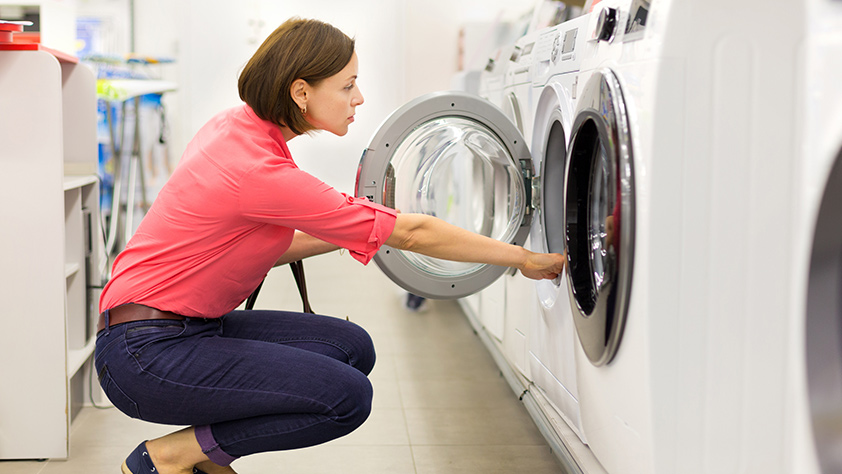When you’re shopping for new home appliances, you can save hundreds every year by “going green.” This refers to energy efficiency, of course. And this factors greatly in calculating the overall cost of an appliance, along with purchase price and projected repairs. To estimate how much you will spend over time, you have to assess these costs.
Energy efficiency can make a significant difference over time. All new home appliances must meet the government’s energy conservation standards. Many exceed those standards to save you more money. So, even if two models look the same, “green” engineering/design features can translate to a big difference in utility bills. To easily identify the best options, here’s a guide to two, key labels.
The “EnergyGuide” label
Manufacturers must conduct standard tests that let you compare the annual energy consumption of different models. The law requires manufacturers to put EnergyGuide labels on the outside or inside of many types of appliances, including refrigerators, refrigerator-freezers, freezers, dishwashers, clothes washers, room air conditioners, lighting products and ceiling fans.
The “EnergyGuide” label includes important details about the following product factors:
- Estimated annual energy cost
- A product’s energy consumption or energy efficiency rating as determined by Department of Energy (DOE) test procedures
- A comparability range displaying the highest and lowest energy costs or efficiency ratings for all similar models
Even a small advantage can pay off considerably over the life of the appliance.
The “Energy Star” label
When shopping, look for the “Energy Star” logo. To earn it, appliances must meet efficiency standards set by the Environmental Protection Agency (EPA), with qualified ones incorporating advanced technologies that use much less energy and water than standard models.
An Energy Star-approved clothes washer, for example, uses about 30% less energy and up to one-half of the water of standard models (the latter amounting to more than 300 loads of laundry annually). Energy Star dishwashers are 20% more energy efficient and require 800 fewer gallons of water every year. Energy Star refrigerators need less power than a 75-watt light bulb run continuously.
Check with your utility company to see if they offer rebates or other incentives for buying energy efficient appliances.
Since 1992, businesses, organizations and consumers have bought more than 5.8 billion Energy Star products, saving over $450 billion and 3.5 trillion kilowatt-hours of electricity, while also achieving broad emissions reductions. A typical household saves 30% – or about $575 – annually by buying Energy Star appliances.











